Computer-aided design (CAD) software is an extremely useful type of program for designing digital assets in 2D or 3D. Both hobbyists and professionals use CAD programs for designing all sorts of items, from prototypes of functional parts to 3D printable toys. There are many different CAD programs, all with different features, purposes, and compatibility requirements.
Mainstream CAD programs, like Fusion and SolidWorks, are only designed to run on devices running Windows or MacOS; this leaves Linux users to turn to alternative programs.
In this article, we’ll go over a few of the best CAD programs that work with Linux, discussing their features, cost, and more.
Considerations
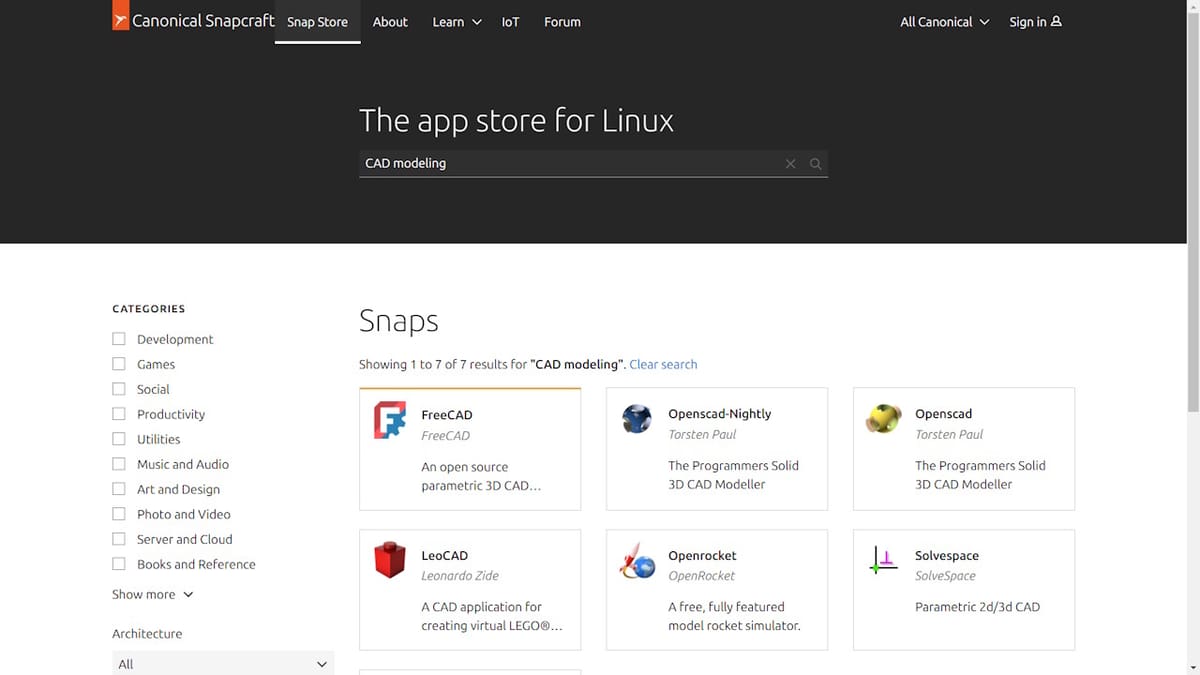
Before we get to our selections, though, we’ll go over a few of the factors we considered when choosing the programs that made the list.
First, the programs need to have native Linux support. It’s possible to run Windows-only applications like SolidWorks on Linux through compatibility software like Wine, but the experience may not be consistent and can be difficult to set up. So we’ll focus on native Linux applications for this list.
Second, we made sure to include free programs alongside paid software to give you more options. Typically, the more you pay for a program, the more features it has – but this isn’t always the case. Take a look at the features listed before you add your card details.
Third, we considered the learning curve. It can be difficult to get the hang of any CAD application, as they’re usually full of bells and whistles. We made sure to include programs that are easier to learn, as well as some that are meant for more experienced users.
For clarity, we focused on three CAD software categories: 3D modeling CAD, 2D drawing CAD, and programmatic 3D CAD. Don’t worry if you don’t know what that means – we’re explaining everything for each!
Now read on to find out which Linux-native CAD tool is right for you.
3D Modeling CAD
Our first stop on our list of CAD programs for Linux, these software options let you build and manipulate 3D models directly. You aren’t telling the software to delete a face or draw a line for you; you are directly deleting that face or connecting two points together with a strike of your mouse or a click of a button.
If you’ve ever used Tinkercad or Fusion, then you’re already familiar with this type of programs, and you’ll definitely notice the resemblance.
Let’s take a look at our top picks: SolveSpace, FreeCAD, and BricsCAD.
SolveSpace
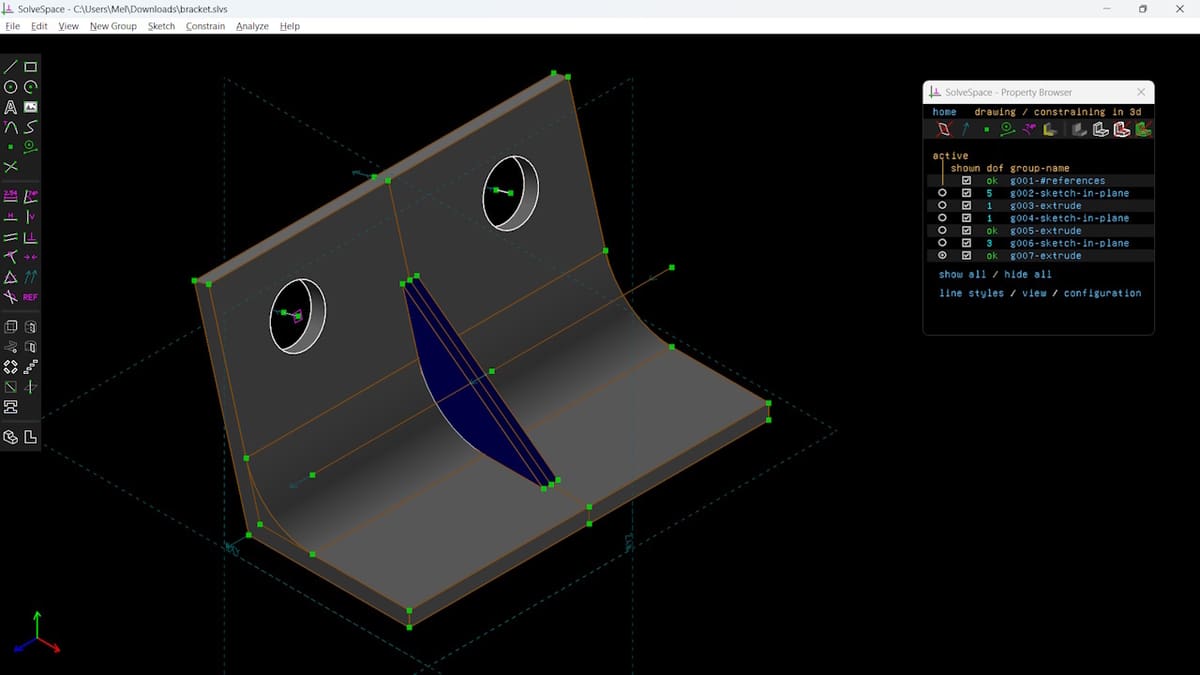
SolveSpace is light and powerful Linux CAD software for those who like the Fusion-style of modeling.
This is fully parametric software territory: A design starts off as a 2D sketch, and then tools like extrude and revolve are used to produce 3D models. Built-in simulation capabilities can quickly show you how your object would behave in the real world.
SolveSpace can export to a number of different file types for both 2D and 3D models, such as DXF, PDF, EPS, STEP, and STL, meaning it can be used for projects on 3D printers as well as plotters, routers, and cutters.
- Cost: Free
- Open source: Yes
- Learning curve: Easy to intermediate
- Special features: Parametric design, can turn 2D drawings into 3D objects, basic simulations, exports various file types
FreeCAD
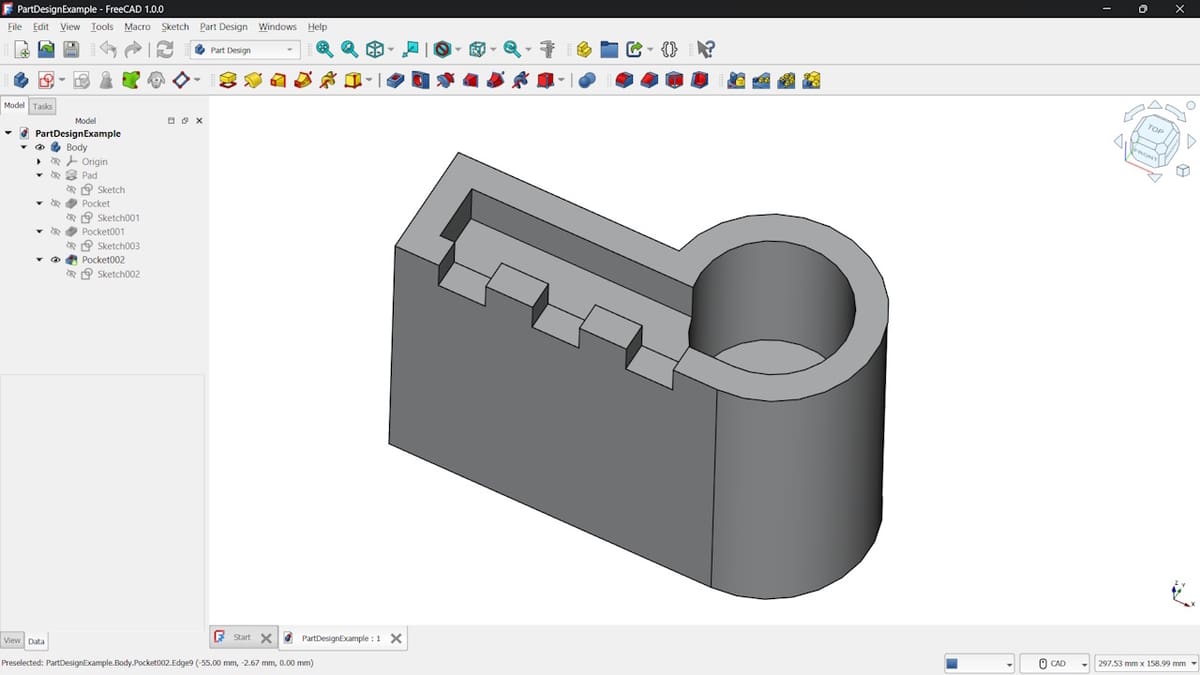
Arguably a predictable entry, we couldn’t have this list without FreeCAD. It’s one of the best CAD software options for Linux and is completely free and open source!
Although FreeCAD was initially designed for mechanical engineering, its multiple workbenches give users all the functionality they need to design anything. The software boasts countless features, including parametric modeling, compatibility with numerous standard file types, and simulation capabilities.
While FreeCAD is powerful, it’s not as user-friendly compared to proprietary programs like Tinkercad or Fusion. The developers had versatility in mind when creating FreeCAD, and they tout it as a perfect choice for hobbyists, educators, programmers, and experienced CAD users alike; this vision might have made FreeCAD more complex to get into.
However, the FreeCAD project received funding from the Open Toolchain Foundation to improve its usability. Plus, it recently achieved a major landmark with a version 1.0 that streamlines workflows and tools for parametric modeling, making it easier to get into and more reliable to work with.
If you’re looking for a free, open-source CAD program that can meet more intense requirements with almost endless possibilities, FreeCAD is for you. To get started, check out our tutorial!
- Cost: Free
- Open source: Yes
- Learning curve: Intermediate
- Special features: Parametric modeling, simulation capabilities, multiple workbenches
BricsCAD
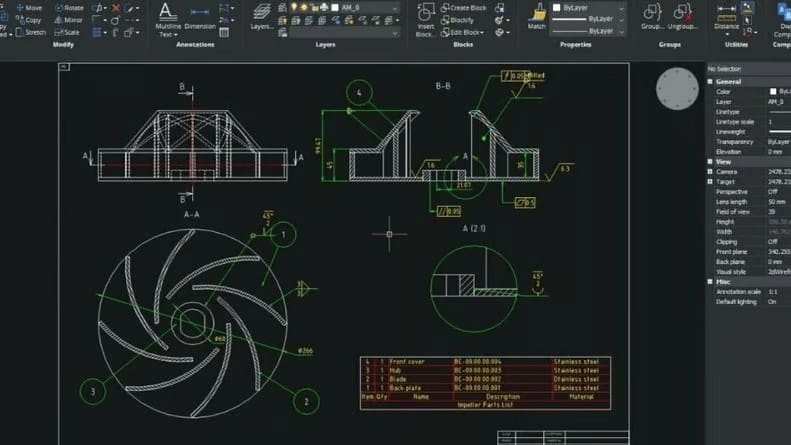
BricsCAD is a competitive AutoCAD alternative, and it comes in a few different packages based on what tools you need. This option isn’t open source, but it’s professional-grade software that can handle anything you throw at it.
This software is used commercially by brands such as Mazda and Bosch, and with that comes a high price. BricsCAD Shape (not to be confused with BricsCAD Lite) is free and will provide you with basic 3D modeling and exporting capabilities. On the other end of the spectrum, the BricsCAD Ultimate package (∼$2,650 for a lifetime license) has everything you could ever need from CAD software: creating 3D designs, running simulations, and annotation tools. BricsCAD also claims to be compatible with AutoCAD formats, which may be helpful when collaborating with other designers or engineers.
BricsCAD offers several packages between these two price extremes depending on the feature you need, so read the description of each package carefully. Good news for students: You can get a 1-year license for BricsCAD Ultimate for free.
- Cost: Free (BricsCAD Shape); ∼$2,650 (BricsCAD Ultimate perpetual license)
- Open source: No
- Learning curve: Expert
- Special features: Material simulations, assembly modeling, parametric modeling, advanced renderings
2D Drawing CAD
2D drawing CAD relies on technical drafting; our selections in this category often skip 3D representation entirely, which can be surprising if you’ve only ever used 3D CAD modeling programs.
These tools can run on computers with very low or high specs and give users a lot of control over 2D technical drawings. This makes them great for CNC routers and laser cutters, two types of machines that work primarily with flat materials. Combined with other 3D modeling programs in our list, these 2D designs can be augmented for 3D printing and modeling.
Let’s take a look at our top picks in this category: LibreCAD and QCAD.
LibreCAD
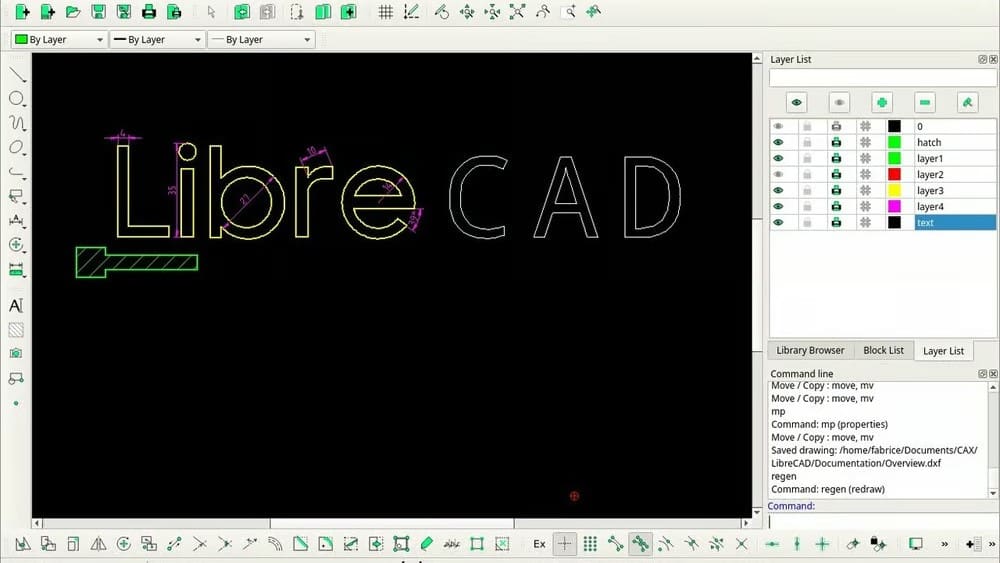
LibreCAD is one of the most well-known free and open-source CAD programs on Linux after FreeCAD, and not without good reason. If you’re new to CAD software, the other options on this list may be somewhat intimidating due to their advanced features and user interfaces. LibreCAD is an excellent option for beginners, built specifically for Linux.
LibreCAD has all of the basic tools you’ll need to get started. However, unlike other software featured on this list, LibreCAD only works in 2D, so it won’t be sufficient if you’re planning on using it for 3D printing on its own.
This program is a great way to get into CAD, with a large community of users and developers who can offer support if needed. However, more confident CAD users may find it limited due to its lack of support for 3D modeling.
LibreCAD is built to allow for speedy alterations, is available in over 30 languages, and has a dependable autosave to keep your work safe. If you’re still learning how to use CAD and don’t mind the limitations of 2D, then this is a great choice.
- Cost: Free
- Open source: Yes
- Learning curve: Easy
- Special features: Fast, autosave, support for 30 languages
QCAD
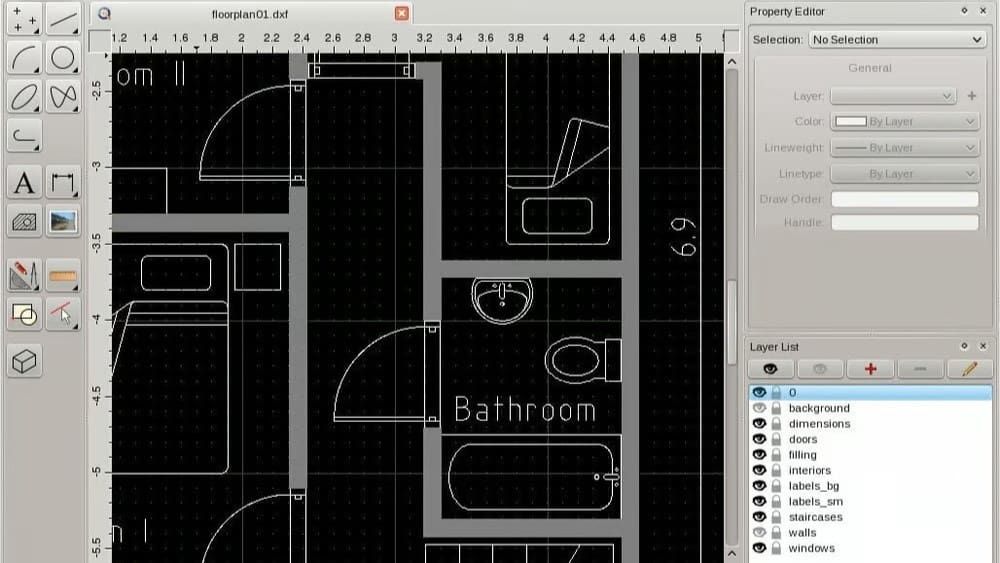
QCAD is another 2D modeling tool that boasts AutoCAD compatibility. It’s free and open source, plus it’s useful for a wide range of users, from aspiring hobbyists to professional architects.
Though this program was designed as a powerful tool to create technical drawings and diagrams, it’s not difficult for beginners.
In addition to all of this, QCAD has a large library of preexisting CAD parts from which users can pull files and offers more than 40 different tools that can be used to create perfect plans.
- Cost: Free
- Open source: Yes
- Learning curve: Intermediate
- Special features: Large part library, DWG and AutoCAD compatibility
3D Programmatic CAD
3D programmatic CAD is a different beast from our other two categories: It uses neither primitive shapes or design sketches but instead, programmed instructions to create 3D objects.
It’s an excellent option for people who already rely on programming logic for their other projects, and CAD programs in that category often have very low technical requirements. The catch is that you’ll have to learn a form of programming language and logic to be able to use them.
Let’s take a look at our selection in this category: OpenSCAD, CadQuery, and ImplicitCAD.
OpenSCAD
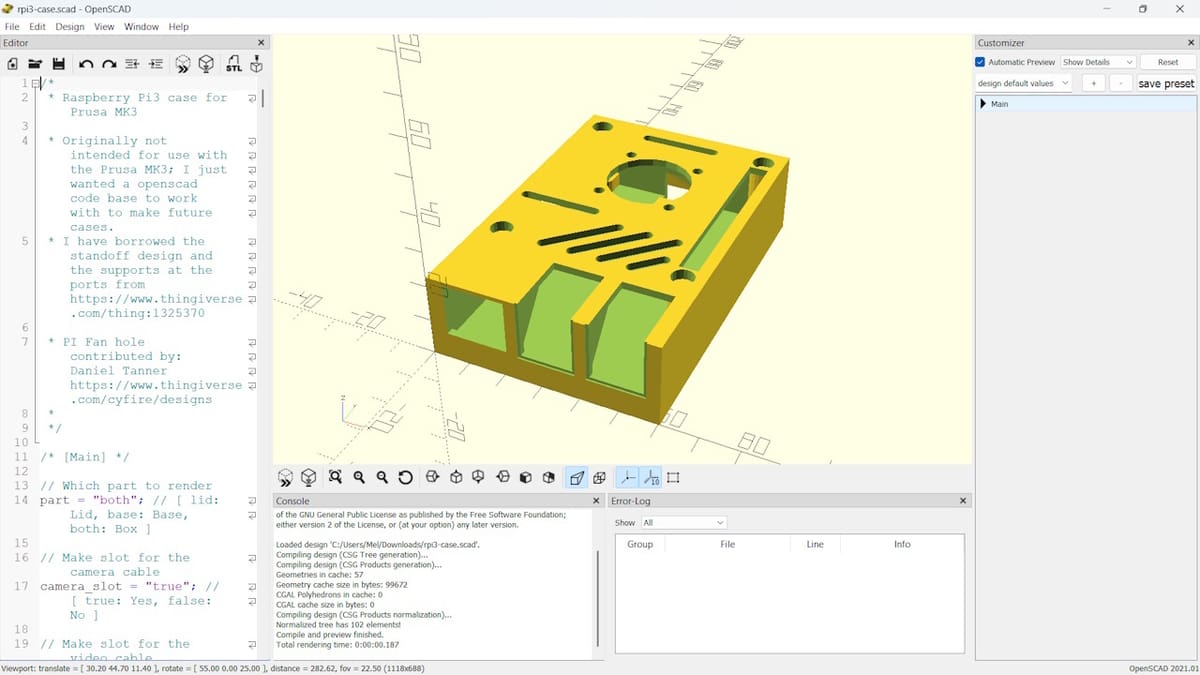
OpenSCAD is the most popular programmatic CAD tool in our selection. In fact, it’s so popular that FreeCAD even has a dedicated plug-in for it! Because of that, learning to use OpenSCAD could be worth the time even if it isn’t going to be your primary modeling tool.
OpenSCAD gives the user full control over the design process by requiring them to explicitly script everything. This is a powerful approach, but it can also be daunting for new users. It’s not an interactive modeler: you will need to update then re-render your program to see your changes! The experience is very different from traditional CAD, but it’s very rewarding for modelers who need accuracy and speed.
- Cost: Free
- Open source: Yes
- Learning curve: Intermediate
- Special features: Parametric modeling, integration with FreeCAD, control over all 3D objects through scripting
CadQuery
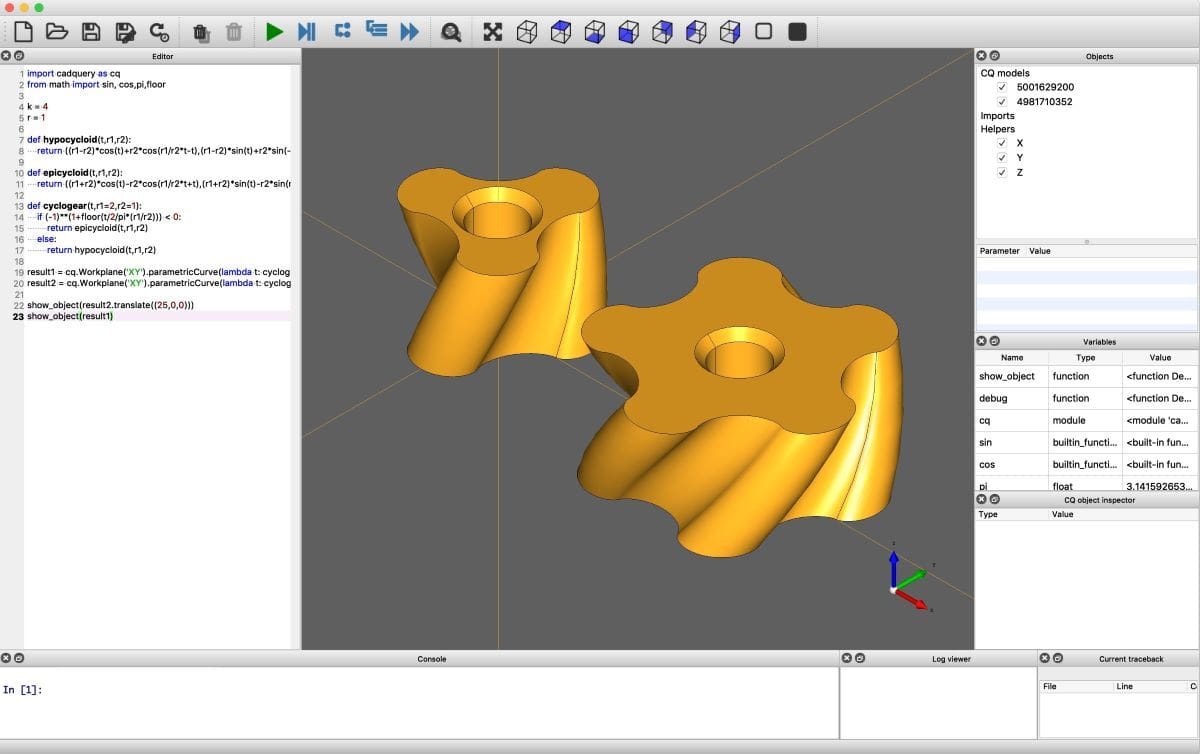
CadQuery is a Python-based CAD scripting library running on OpenCascade – the same 3D geometry technology used by FreeCAD. It’s a very capable CAD solution comparable to OpenSCAD, just slightly less well-known.
CadQuery does have some major advantages over OpenSCAD. Python is a programming language with set standards, and CadQuery can import or export STEP files with other CAD programs. Since it’s a Python library, you can use it without a graphical user interface – in a Jupyter development notebook for example – or with its popular GUI CQ-Editor. It can also use other Python libraries.
- Cost: Free
- Open source: Yes
- Learning curve: Intermediate
- Special features: Parametric modeling, Python syntax, ability to use other Python libraries
ImplicitCAD
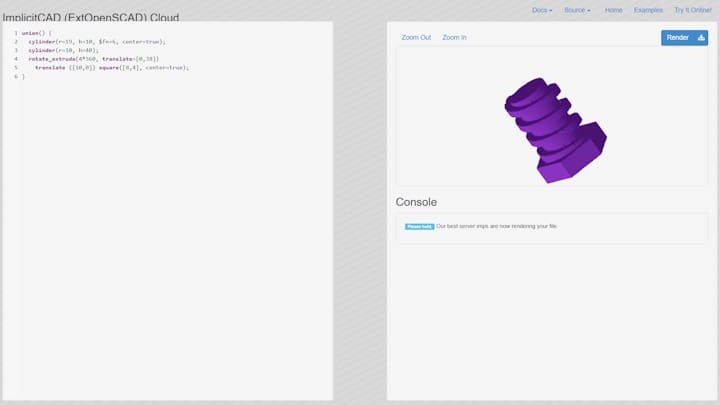
ImplicitCAD is not for the faint of heart. It was designed to show the power of mathematics and programming, and as a result, is very versatile.
ImplicitCAD is based entirely on commands that are typed into a text interface. To use this software, learning traditional CAD won’t be your biggest concern, since it’s controlled solely with programming.
It uses the language Haskell, which may be a disadvantage compared to CadQuery’s use of Python, but does make it very versatile. Believe it or not, there are many benefits to “coding” your designs, including allowing the user to automate repetitive tasks. The software is parametric by nature, and pre-existing data, like the heights of pins in a lock, can easily be added to your design.
ImplicitCAD is free and can run directly in your web browser; this alone makes it worth a try!
- Cost: Free
- Open source: Yes
- Learning curve: Advanced
- Special features: Web-based, task automation, limited only by what you can code
Honorable Mention: CAD Sketcher
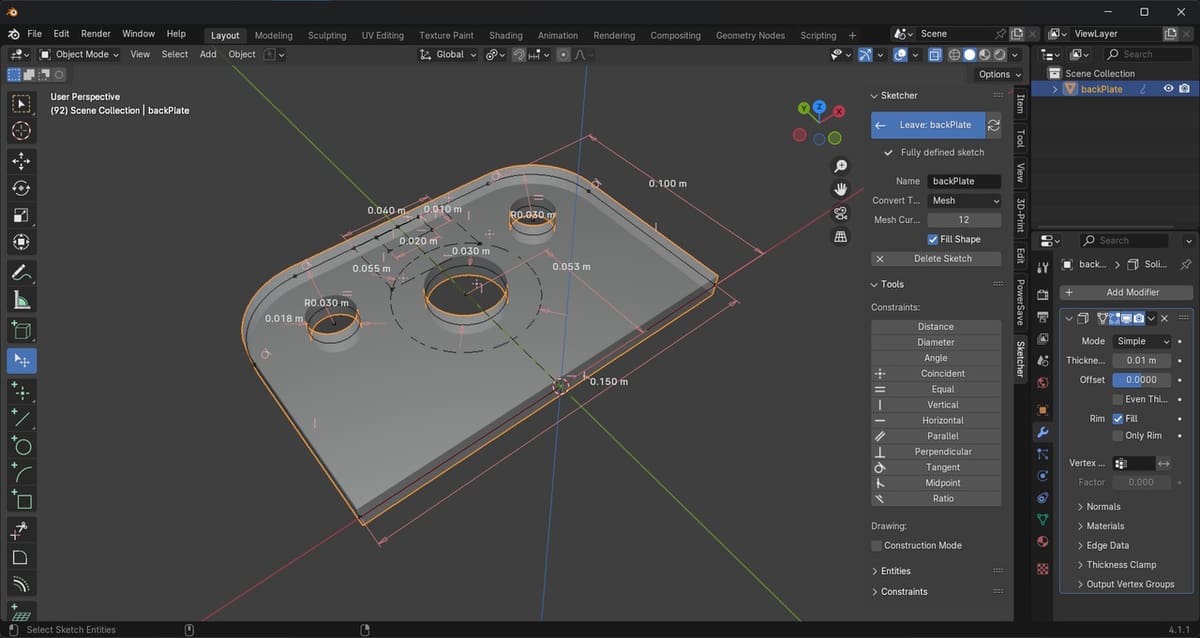
CAD Sketcher is an add-on that brings Fusion’s flavor of 3D CAD modeling to the most popular open-source, multi-platform modeling tool: Blender! Once finished, features designed with CAD Sketcher can be manipulated like any other object in Blender.
CAD Sketcher is very much at the beginning of its development – the current version is 0.27.5 – but already very popular with almost 1,200 ratings averaging 4.8 at the Gumroad page. This is the preferred source for new installations and latest news. The growing popularity shows that contemporary 3D CAD users will find an interface that clicks with their expectations – and the support to boot: The development team partnered with content creator Maker Tales to promote the project, as well as provide support, gather feedback, and showcase projects over the Maker Tales Discord.
CAD Sketcher is accepting financial support from users who can afford it. You can get it for free from GitHub and Gumroad or choose to “pay what you want” through Gumroad to support its development.
CAD Sketcher doesn’t turn Blender into a CAD tool just yet, but it will provide Blender users with an intro to parametric, 3D modeling CAD. And experienced CAD designers will use it as their gateway into Blender!
- Cost: Free, with a donation option
- Open source: Yes
- Learning curve: Intermediate to advanced
- Special features: Parametric modeling, integrates into Blender, a growing Discord community
License: The text of "Linux CAD Software: The Best Programs" by All3DP is licensed under a Creative Commons Attribution 4.0 International License.


